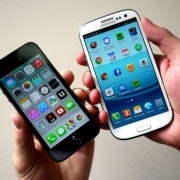The high cost of being poor
There is an old saying that it is expensive to be poor. And if it is true that it takes money to make money then it can also be said that if you don’t have money you lose money.
Think about it.
If you are on a low income you are more likely to buy something inexpensive but of lower quality. That means you may opt for a $3000 rust-bucket but you will probably pay that much and more ensuring it stays on the road. Particularly if you are one of 45 per cent of Americans who don’t have access to public transport.
That is not to mention the cost of maintaining what finances you do have.
If you do actually have a bank account then you will usually have to have a minimum balance in it to avoid paying a monthly fee. That is of course on top of your monthly account-keeping fee. Don’t forget, banks in the US will charge you about $US6 to cash your paycheck and if you don’t manage to make it to the end of the month before the money runs out then there will be a fee for that, too -- and a pretty hefty one.
The Pew Research Centre finds that the median overdraft for a $US36 transaction is about $US35 in fees.
To make matters worse, the Economic Policy Institute, a left-leaning think tank, says that more than 60 per cent of low-wage workers in the US have some pay illegally withheld by their employer each week. What that adds up to for the average worker is a loss of $US2634 per year in unpaid wages, or 15 per cent of the incomes of people who can least afford it.
The inability of low-income earners to get access to funds is what is called financial exclusion.
What often happens as a result is that, in order to get by, almost 30 per cent of Americans look beyond mainstream banks, according to the independent Federal Deposit Insurance Corporation. But they will resort to expensive alternatives in doing so, like non-bank money orders, cheque-cashing services, prepaid debit cards and payday loans.
Given that you can’t put a price on desperation, those issuing payday loans can charge an average of 138 per cent in interest and fees.
While that is a figure which has been reined in since the US recession, regulators and politicians have been slow to come after predatory lenders in America and the issue is still currently being debated fiercely in many US states.
Last week a US court ordered North Carolina's Four Oaks Bank to pay a penalty of $US1.2 million ($A1.29m) over claims it failed to protect consumers' bank accounts. US prosecutors alleged Four Oaks Bank allowed a privately owned third-party payment processor to illegally process around $US2.4bn in return for more than $US850,000 in fees. The case is part of a broader push by the US Department of Justice called "Operation Choke Point", which is investigating whether banks enabled payday lenders to illegally siphon billions of dollars from US accounts. (Incidentally, the operation was in the headlines this week after its push to stop banks accepting “undesirable” clients saw a group of porn stars have their Chase bank accounts terminated. Hopefully that means the government will redefine the scope of its targets and leave the porn stars in peace.)
In Australia, financial exclusion is not quite as dire as in the US but there is still more that needs to be done to ensure low-income earners are participating in the mainstream economy.
National Australia Bank will today release a report by the Centre for Social Impact which shows that access to financial products does not always align with the levels of wealth or economic development of a country.
The report shows that in the US 87 per cent of people have access to a bank account but that is well below its economic peers. About 98 per cent of Australians, by comparison, have a bank account. The report does point out though that those figures are particularly high because the government welfare system requires individuals to open a bank account to receive benefits and that access to a bank account “falls away sharply” for the “working poor”.
Gavin Slater, NAB group executive for personal banking, told Business Spectator that there needs to be greater transparency of the fringe lending sector in order to see a clearer picture of how many Australians are borrowing from alternative lenders and work out what affordable alternatives can be found.
"We have such a strong financial system in Australia and at NAB we believe it is unacceptable for this level of financial exclusion to continue,” he said. “Having access to a small amount of credit can sometimes be the difference between affording medical treatment for an unexpected illness or affording a fridge and putting fresh food on the table for your kids instead of living out of an esky.”
The bank has a partnership with Good Shepherd to provide affordable microfinance to one million people on low incomes by 2018.
It is a good start and others should follow their lead. Particularly when the World Bank says financial inclusion is “crucial for reducing poverty and boosting shared prosperity”.
The poor benefit greatly from having an opportunity to access mainstream funding, but let’s be honest -- so does the economy.
Simply put, financial inclusion of low-income earners needs to remain a priority for not only the Australian and US governments but banks and other financial institutions as well. The cost of not doing so isn’t just a social one but an economic one too.
Mathew Murphy is a Walkley Award winning journalist based in New York
















